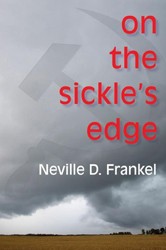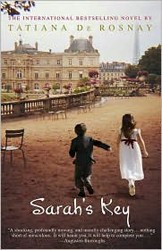Readers interested in the twentieth-century art world and the Second World War might have already discovered recent books and films about artworks, heirlooms, and libraries stolen from Jewish families by the Nazis and the incredibly difficult road to restitution over the next half-century. So what makes Lauri Lico Albanese’s novel Stolen Beatury so incredibly delicious to read, and how does it uniquely deliver intelligent plot, literary substance and, emotional impact?
Stolen Beauty flips back and forth between the glamorous wealthy world of early twentieth-century Vienna and the rapidly darkening years of the 1930s of Nazi-occupied Austria. Albanese’s dazzling descriptions depict each moment’s contemporary arts movements and real-life artists of the time, following these characters into the new center of Western culture, which has just shifted from the Parisian Impressionist landscapes to Vienna’s dark symbolism.
The brand-new Secession Gallery is ready to exhibit the avant garde masterpieces of Gustav Klimt and his contemporaries. The Gallery is designed for physical change, with moveable interior walls and adjustable lighting, and collectors and critics are ready to view the first international exhibition of new work. Albanese’s reader is a willing fly on the walls of the lavishly decorated rooms and coffee houses hosting salons of exciting discussions about art and philosophy, devouring minutiae about the lives of Adele Bloch-Bauer and her beloved siblings — namely her sister Thedy and brother Karl — her husband Ferdinand Bloch, her niece Maria, and a seductive lover: the outrageous and brilliant artist Klimt, amid his beautiful models.
This is all set to the backdrop of Vienna’s wealthy activist women’s self-discovery and self-actualization; burgeoning ideas of physical freedom in fashion, doing away from corsets; and sexual and intellectual freedom as well. In the chapters narrated in the voices of Adele Bloch-Bauer and Maria Altmann, sporadic italicized snippets of information about Klimt’s personal life and world history put the story in perspective. Adele and her sister Thedy lead definitively different lives, by disposition, by willful design, and by chance, but the loving relationship between Adele and Thedy’s daughter, Maria, cements the sisters’ connection forever.
A historical fiction novel embellished by fabricated conversations, relationships, and events, Stolen Beauty colors and enhances the true drama of the life of Adele Bloch-Bauer, known to the world as the Lady in Gold.
Miriam Bradman Abrahams, mom, grandmom, avid reader, sometime writer, born in Havana, raised in Brooklyn, residing in Long Beach on Long Island. Longtime former One Region One Book chair and JBC liaison for Nassau Hadassah, currently presenting Incident at San Miguel with author AJ Sidransky who wrote the historical fiction based on her Cuban Jewish refugee family’s experiences during the revolution. Fluent in Spanish and Hebrew, certified hatha yoga instructor.




